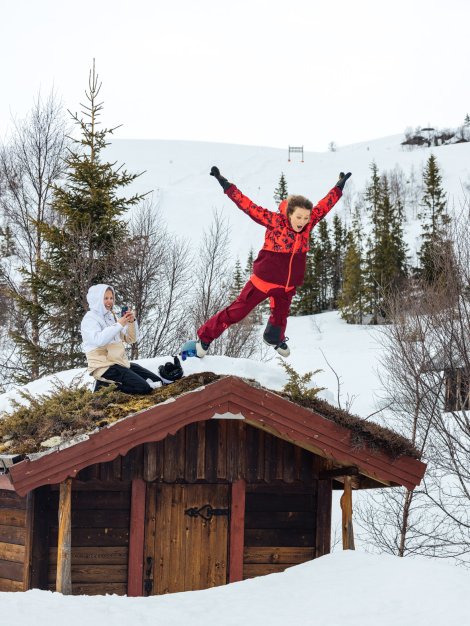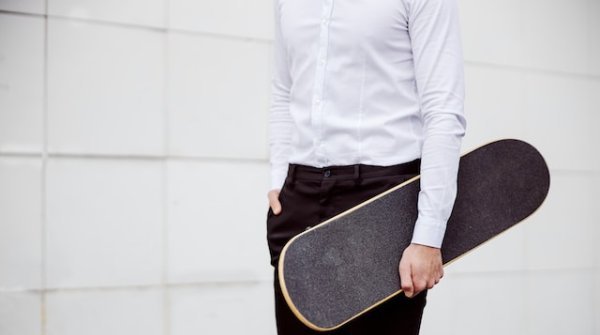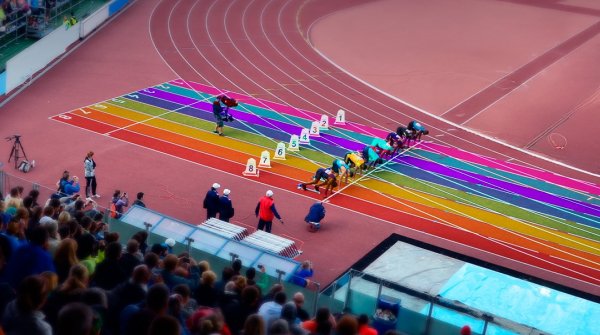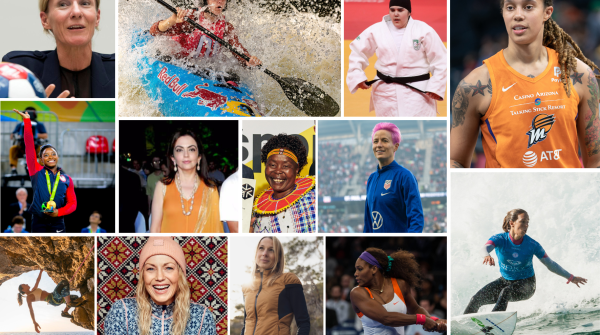When I was in school, I was always the sporty girl who wasn't necessarily good at school. But I always liked to do things differently and put my energy into creative projects. When I later asked my mother what I was like as a child, she said: "You were your own boss". I did what I wanted, and I still feel that way.
As part of the Norwegian mogul skiing team, I was somehow always tougher than the other girls. I wasn't afraid of falling, always tried everything and told myself: I'm not going to die. Then I just went for it, but I fell a lot as a result. I was probably the one in the team who had the most crashes.
After winning gold at the 2002 Olympics, I realized that my friends were finished with their studies, some of them already had families and I thought about whether I shouldn't behave in a more adult and age-appropriate way. But I wasn't done with skiing yet. My sponsor at the time, Bula, asked me if I wanted to design a cap collection that they would sell. So I was able to ski for another four years and work as a hobby designer. After a while, it was a pretty smooth transition from sport to 100% business.
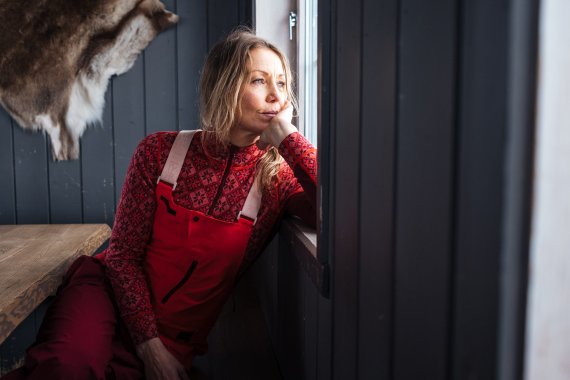
In 2006, we were at ISPO Munich for the first time. That was the starting signal for more brand awareness in Europe, even beyond Norway. In the beginning we mainly made hats, but in 2005 we introduced baselayers. We wanted to be the best in baselayers, but with a playful and humorous approach. And with lots of color. For the Kari Traa brand, that and the fact that we were a women-only brand was crucial. We are still known for our baselayers, especially the Rose baselayer, which is inspired by the traditional pattern of a Norwegian tapestry. This specific tapestry still hangs above the sofa on my parents' farm in Voss. We have evolved as a brand ever since and I thought that at some point we would have a product that would replace the Rose Baselayer, but it is still a perennial favorite. It was always clear that we would remain a women-only brand, although we were always asked when we would make something for men.
We now have a collection that consists of different layers and is geared towards different sports. Although we come from a winter sports background, we also make clothing for other outdoor sports such as hiking or trail running.
Of course, the current trend for sporty clothing plays into our hands. There are more and more brands for women, but the majority of them focus on yoga or something similar. Although there are many unisex brands that design specifically for women, there is still a need for more women's brands. I can only encourage women to do their own thing and start designing products from their perspective. I just say: welcome to the market! Because although we have been around as a brand for over 20 years, competition always ensures that you improve and push yourself more.
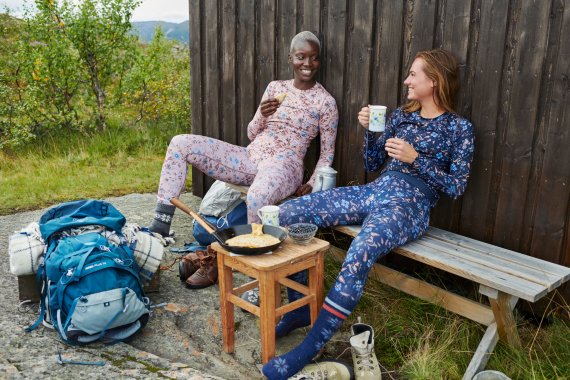
I've always been different, and that's what defines the Kari Traa brand. The sports industry has become a bit more colorful and, at least in Norway, we have also contributed to that. Over time, I think we lost sight of something that makes us different from other brands. In the meantime, however, we have found ourselves again and know that we have to be authentic as a brand and be ourselves. This has also brought us back to our unique selling point - also in terms of our colors and patterns. We try to push our own boundaries and not think so much about others.
We don't do anything differently or pay attention to anything specifically to please women, because our team is also made up of women, and for us that's just normal. We just want to make great products to support other women to be happier, healthier and stronger and we promote that through social media and our brand channels. A lot of this follows the motto: take your passions seriously, but not yourself too much. Our current campaign, for example, is called "Uff da", which means "Oops, but you'll be fine" in Norwegian.
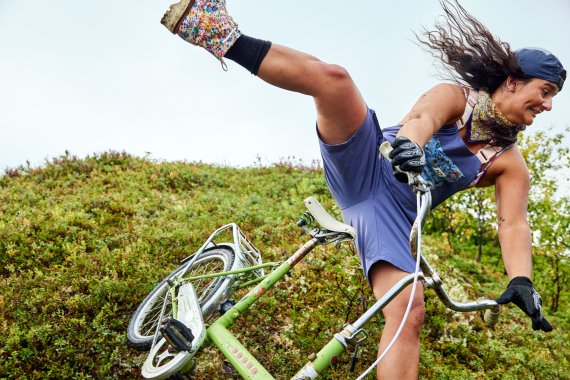
When you are a small brand or just starting out, many things are much more difficult. It starts with sustainability and ends with producing styles in more sizes. When you start out and don't have that much money, it's difficult to produce XS, S, M, L, XL and XXL, because in the sports industry it's mainly S, M and L that sell. We've been lucky enough to be able to offer styles in more sizes year after year and kit out more women for their outdoor adventures.
It is also difficult as a small brand when it comes to sustainability - for example, being able to afford to buy sustainable materials in smaller quantities or making a difference in recycling. We need to become more of a partnership here and work together more.
At the moment, I sometimes get the feeling that it's all about money and power. The world situation with wars and conflicts is affecting everyone and people are spending less and less money. However, I think that in the end it can also be good for us if we all learn from the crises and do less harm to the environment by planning better and not just producing more and more and pushing it onto the market.
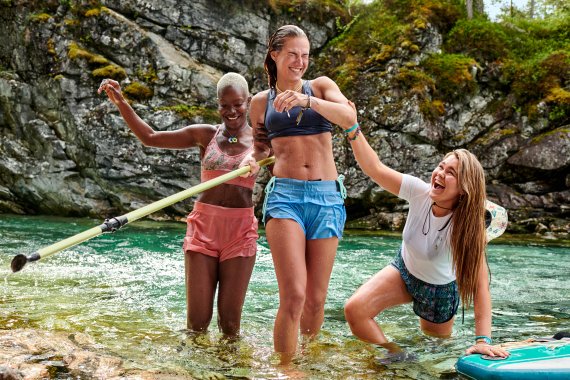
The Kari Traa team is of course now much bigger than when we started out. It's much more professional. There are 22 women in the team, most of them in Oslo. Although I always found it easier to work with men in the past: The girls in the team are very disciplined and there are no intrigues either. We also sit together in the office with the other active brands and do a lot together across brands.
I'm no longer in the office every day, I can pick and choose. However, the team always involves me, be it in photo shoots or other projects. However, I wouldn't be able to take myself out completely, sit back and just observe what the team is doing - even if I now divide my time between different projects and work in an event location on an old dairy site in Voss, for example.
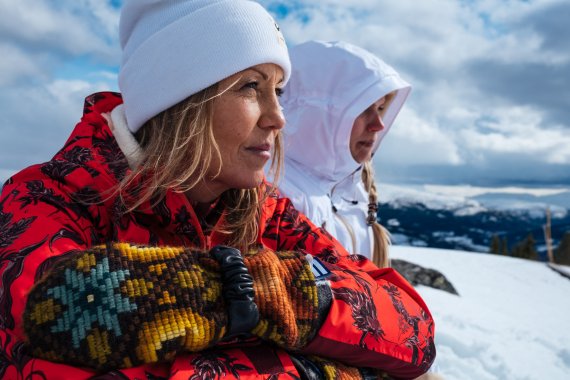
I actually prefer to be in the background and come up with new ideas for pictures and designs. For example, we want to recreate the Norwegian pattern of our Rose Baselayer with 100 women and girls in Voss over the next few days. Or I've sewn gloves from an old tapestry and a second-hand leather jacket that we want to give away on social media. So I'm more responsible for inspiration and tomorrow's ideas and I'm incredibly lucky. The team still wants me to be part of it. I am very proud of the team and how they continue to drive and develop the brand. Sometimes I think they are working too hard and then I remind them to stop and take a break. I've often thought about whether it would have been better if the brand hadn't been named after me. It was only a project for a few years at the beginning, I didn't know if the brand would survive. But one or two years turned into over 20. I turned 50 in January, but I guess time flies when you're happy.
Kari Traa was founded in 2002 as a sportswear brand by the three-time Olympic champion of the same name to offer a female perspective in the male-dominated outdoor market - with bold colors, playful designs and Norwegian tradition. The brand is part of the Active Brands Group, just like the Sweet Protection, Bula, Johaug and Dæhlie brands. Kari Traa has long since established itself beyond the borders of Norway and in twelve other European countries, with growth in all markets. Since its market launch in 2015, the brand has become a lot more popular among active women in the US and Canada.

 Sports BusinessSki Mountaineering Goes Olympic: What Milano-Cortina 2026 Means
Sports BusinessSki Mountaineering Goes Olympic: What Milano-Cortina 2026 Means
- ISPO awards
- Mountain sports
- Bike
- Design
- Retail
- Fitness
- Health
- ISPO Job Market
- ISPO Munich
- ISPO Shanghai
- Running
- Brands
- Sustainability
- Olympia
- OutDoor
- Promotion
- Sports Business
- ISPO Textrends
- Triathlon
- Water sports
- Winter sports
- eSports
- SportsTech
- OutDoor by ISPO
- Heroes
- Transformation
- Sport Fashion
- Urban Culture
- Challenges of a CEO
- Trade fairs
- Sports
- Find the Balance
- Product reviews
- Newsletter Exclusive Area
- Magazine
